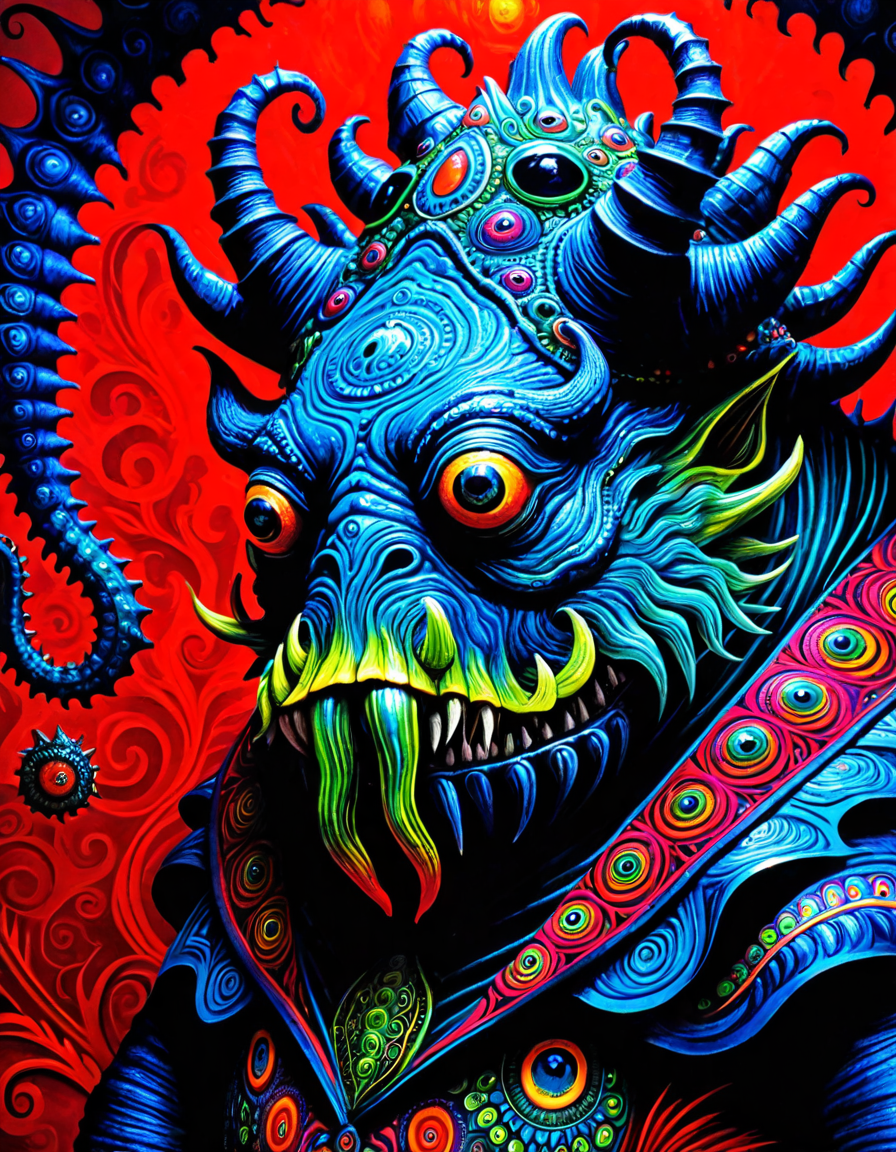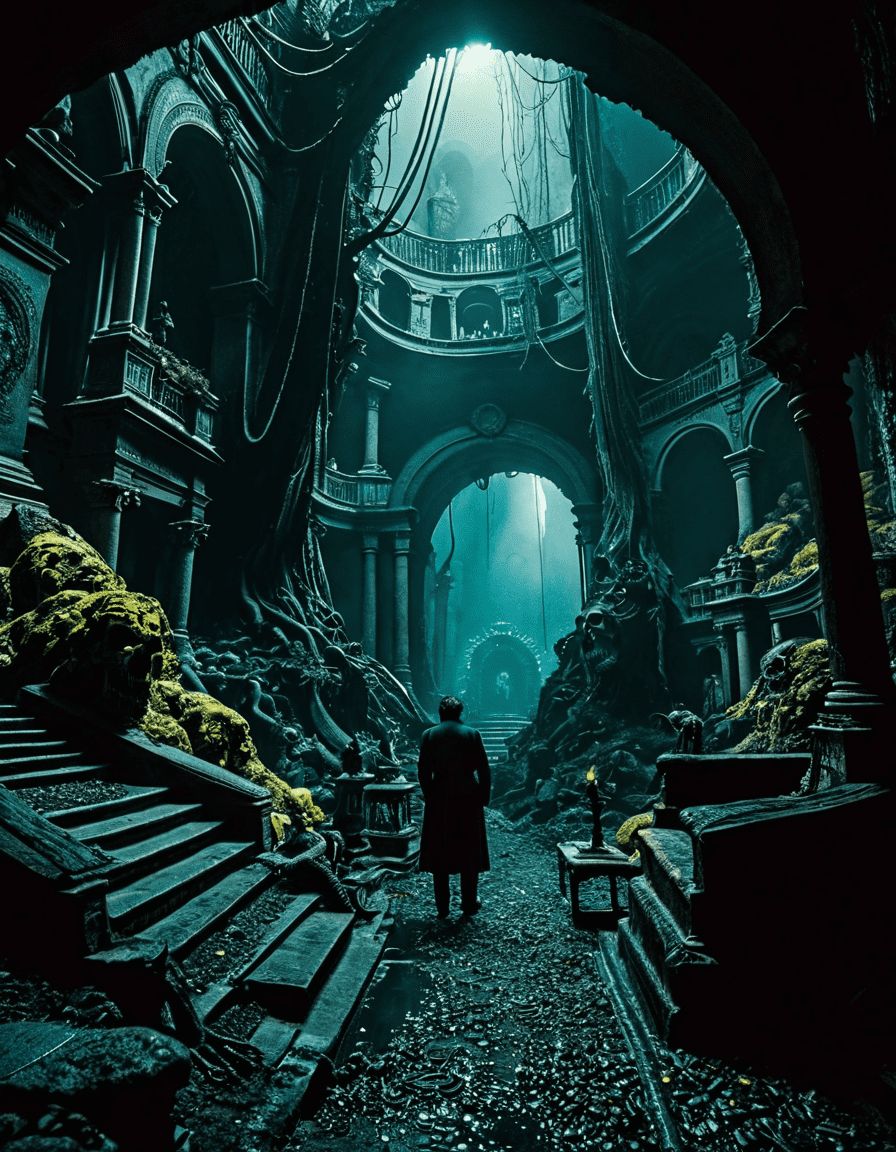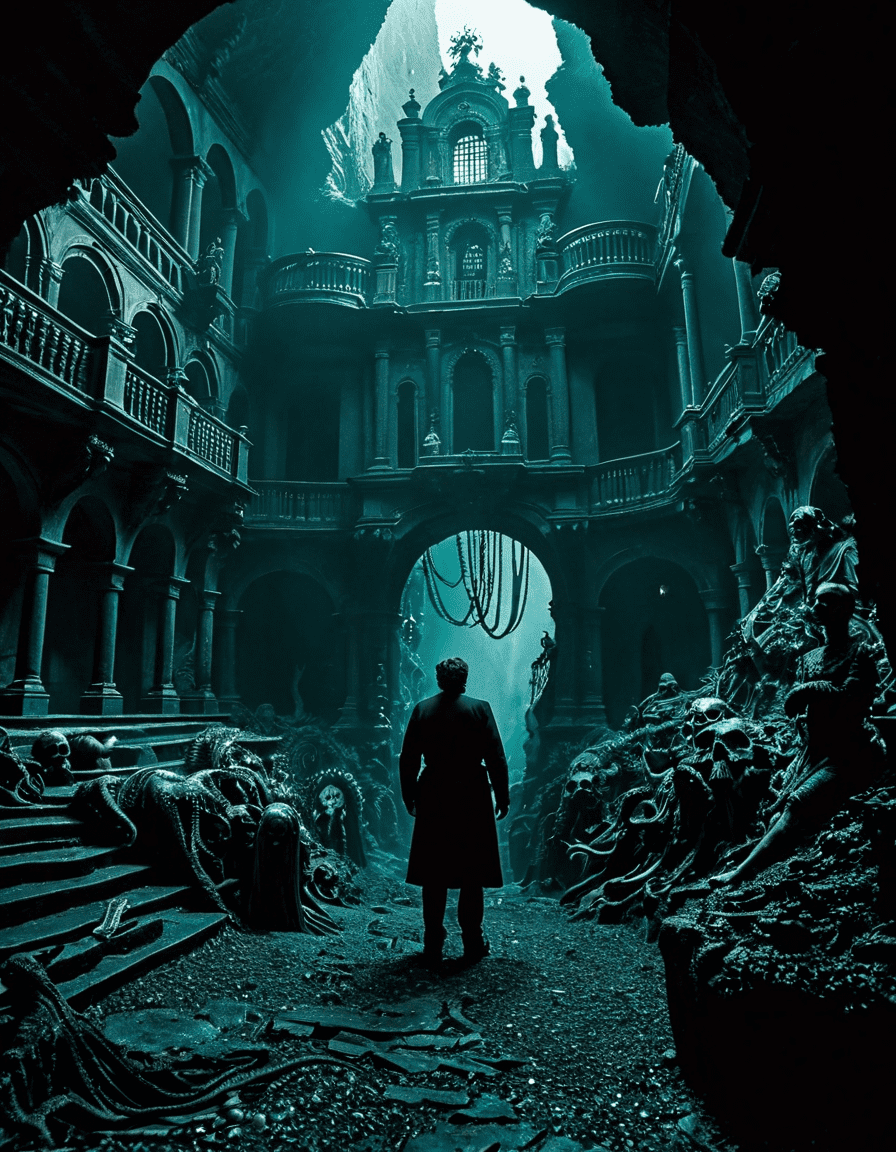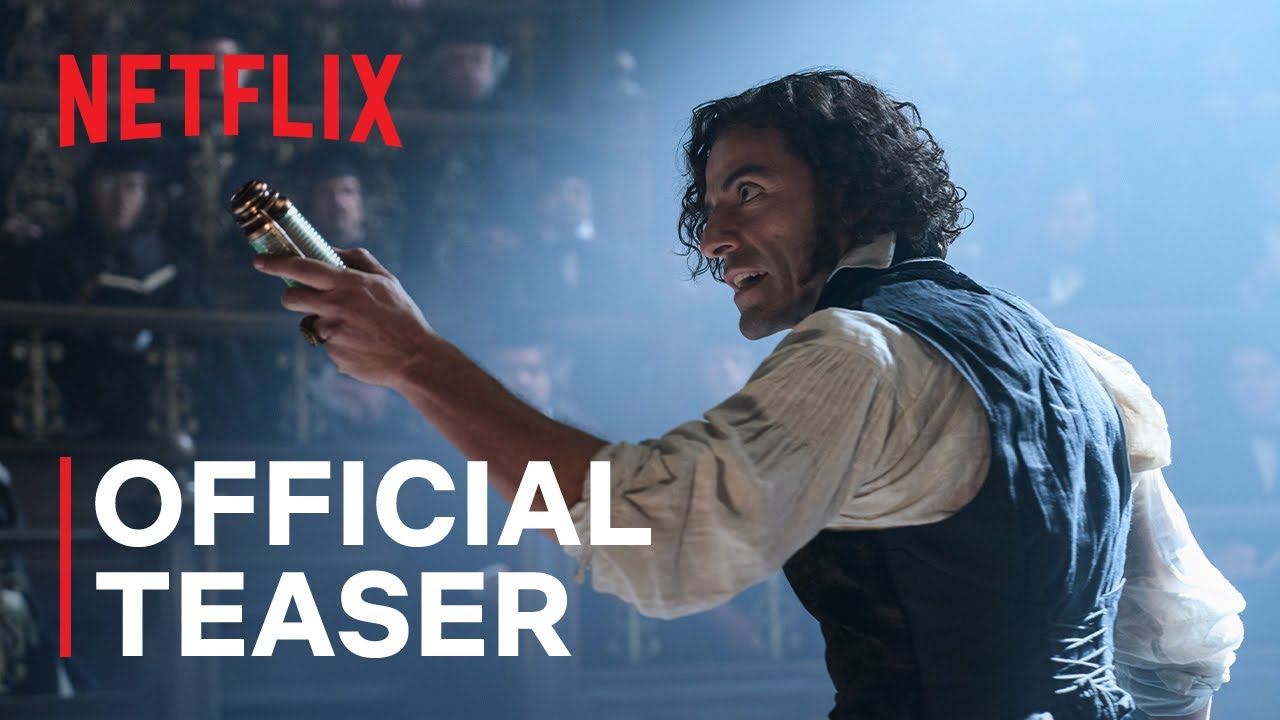When you think of cinematic visionaries reshaping the landscape of fantasy and horror, Guillermo del Toro definitely comes to mind. With a career marked by breathtaking visuals, rich storytelling, and poignant themes, del Toro has constructed an extraordinary universe that blends gothic elements, fairy tales, and intricate world-building. His ability to evoke emotion through fantastical creatures and dark, compelling narratives has made him a household name among movie nerds and casual viewers alike. Let’s dive deep into the magical yet haunting universe crafted by Guillermo del Toro and explore what makes him the master of dark fantasy storytelling.
The Unique Aesthetic of Guillermo del Toro’s Universe
Guillermo del Toro’s aesthetic is instantly recognizable, a beautiful marriage of whimsy and horror. Films like Pan’s Labyrinth and The Shape of Water showcase his flair for creating environments where monsters aren’t just menacing creatures; they possess untold depth and humanity. Del Toro’s rich color palettes, intricate textures, and imaginative creatures create immersive worlds that invite viewers to feel as if they’ve stepped straight into his imagination.
One standout feature of del Toro’s work is his strong preference for practical effects over CGI, which lends an organic feel to his fantasy realms. Take, for instance, the hauntingly beautiful creatures in Hellboy II: The Golden Army, where animatronics and puppetry add a layer of realism often lost in digital animation. This tactile experience connects the audience to the story, engendering empathy for even the monstrous characters. His ability to blend visual splendor with profound storytelling has set him apart as an iconic director in contemporary cinema.
For del Toro, storytelling transcends mere visuals; it’s about crafting experiences filled with emotional resonance. Each frame he creates feels like a carefully painted canvas, inviting fans to traverse through darkness and light, beauty and horror, all while grappling with the human experience. Through this distinctive blend of styles, Guillermo del Toro has carved out a niche that fascinates audiences and continues to inspire filmmakers.

Top 7 Themes in Guillermo del Toro’s Dark Fantasy Films
Del Toro isn’t just a visual artist; he’s a storyteller with masterful themes interwoven into the fabric of his films. Let’s explore the top seven themes that give his work an unforgettable edge:
1. The Innocence of Childhood vs. Harsh Realities
2. The Monstrous as Metaphor
3. The Fluidity of Identity
4. The Power of Imagination
5. Nature as Both Beautiful and Dangerous
6. The Complexity of Relationships
7. Redemption Through Understanding
These themes resonate deeply, making Guillermo del Toro’s films not just entertaining but also thought-provoking explorations of the human condition.
Guillermo del Toro’s Influence on Modern Horror and Fantasy
Guillermo del Toro’s influence on horror and fantasy is unmistakable, and he’s successfully revitalized these genres with emotional depth and social commentary. His films dissolve genre boundaries seamlessly, showing that horror can carry poignant messages and heartfelt connections. Filmmakers like Jordan Peele, known for Get Out, and Ari Aster, who directed Hereditary, often draw inspiration from del Toro’s documentary-style approaches to storytelling, delving into the complexities of human psyche through genre lenses.
Moreover, del Toro’s impact can be seen in the rise of character-driven narratives within horror and fantasy. Today’s filmmakers recognize that to engage audiences, it’s vital to create characters that resonate on a personal level—something del Toro mastered early on. His ability to breathe life into creatures that emit both fear and sympathy encourages a new generation of filmmakers to embrace the monstrous as relatable beings, rather than mere antagonists.
In many ways, Guillermo del Toro represents a bridge between the traditional tales of yore and the modern cinematic spectrum. His unique ability to blend horror with heart allows audiences to confront their greatest fears while still believing in the beauty of human connection. His legacy is sure to inspire future storytellers to craft their own tales that navigate the fine line between light and darkness.

The Art of Collaboration: Guillermo del Toro’s Working Relationships
Collaboration is a cornerstone of Guillermo del Toro’s filmmaking process, and his relationships with extraordinary talents have shaped his vision into its beautiful form. Notable partnerships, like those with cinematographer Guillermo Navarro and production designer Guy Davis, have allowed del Toro to carve out stunning visuals that mesmerize audiences.
Navarro’s ability to capture the subtle nuances of shadow and light complements del Toro’s imaginative storytelling, as seen in The Shape of Water. On the other hand, Davis’s elaborate set designs breathe life into del Toro’s worlds, crafting spaces that are profoundly haunting and richly detailed. Their collaborative synergy highlights how essential teamwork is in transforming visionary ideas into cinematic realities.
Moreover, del Toro’s openness to collaboration extends to his actors. Stars like Sally Hawkins and Doug Jones contribute their own interpretations, adding layers to their characters. This spirit fosters an innovative and inclusive atmosphere on set which resonates throughout the final product, allowing audiences to experience the magic of storytelling from various perspectives.
A Deep Dive into Guillermo del Toro’s Contributions to Animated Storytelling
Del Toro isn’t just a master of live-action filmmaking; his contributions to animation further showcase his unparalleled creativity. Through projects like Tales of Arcadia and his beautifully crafted Pinocchio, he demonstrates how animation can explore darker themes while reaching broader audiences, including young viewers.
In Tales of Arcadia, del Toro blends adventure with imaginative storytelling, showcasing the rich world of creatures and fantasy. The series delves into themes like friendship and bravery, making it a perfect blend of entertainment and moral lessons for children. His adaptation of Pinocchio allows del Toro to explore heartfelt narratives while embracing animation’s limitless possibilities, proving that he can transcend genres with flair.
Animation offers del Toro a space to transcend physical limitations; his creativity shines as he constructs fantastical worlds where anything is possible. These animated works not only reflect his signature style but also inspire future animators to think outside the box and embrace the limitless potential of storytelling.
Awards, Recognition, and Cultural Impact of Guillermo del Toro
Guillermo del Toro’s unparalleled contributions to cinema have not gone unnoticed. With multiple accolades, including Academy Awards, Golden Globes, and BAFTAs, he stands as a titan in the industry. His film The Shape of Water clinched the Best Picture Oscar in 2018, a nod to both his imaginative storytelling and the cultural significance embedded within his narratives.
His work stimulates crucial conversations around acceptance and representation, reinforcing messages about empathy and understanding the “other.” This impact resonates not just within the cinematic realm but also in broader cultural discussions, challenging audiences to rethink their perceptions of beauty and monstrosity. Del Toro’s ability to frame monstrous characters as vessels for human emotion shifts societal discourse and highlights the beauty found in difference.
The cultural relevance of his storytelling extends beyond entertainment; it bridges gaps and fosters understanding among diverse audiences. Guillermo del Toro doesn’t just create films; he initiates dialogues that continue to shape and inspire future generations of storytellers and viewers.
Future Projects: The Evolving Vision of Guillermo del Toro
As we look towards the future, Guillermo del Toro shows no signs of slowing down. His upcoming projects, including the highly anticipated adaptation of At the Mountains of Madness, promise to challenge genre conventions yet again. With each new venture, he continues to innovate and redefine dark fantasy storytelling.
In exploring At the Mountains of Madness, del Toro will undoubtedly infuse his signature style, blending complex emotional journeys with visually stunning landscapes and characters. Fans eagerly await what fresh insights he will deliver, knowing his approach will illuminate fundamental truths about humanity while engaging with horror and existential queries.
In 2026, audiences can also expect more collaborations with groundbreaking creators, as del Toro draws inspiration from diverse artists to enrich his narratives. Watching his creative evolution is truly a thrilling aspect of contemporary cinema, hinting at even greater masterpieces to come.
Crafting a Legacy: The Lasting Impact of Guillermo del Toro
Guillermo del Toro’s body of work transcends just being cinematic entertainment; it serves as a critical examination of the human condition, interweaving fears, hopes, and the intricacies of existence. His thematic explorations, collaborative spirit, and influence on modern storytelling not only exemplify his incredible skill but also weave a rich legacy that continues to resonate across generations.
In a cinema landscape that’s ever-changing, del Toro stands as a beacon for those who dare to dream and push boundaries. The monsters he creates invite us to confront our fears while teaching us to embrace our vulnerabilities. As we celebrate his unparalleled contributions, one thing is abundantly clear: Guillermo del Toro’s unique voice in dark fantasy storytelling will echo in the halls of cinematic history for years to come.
Guillermo del Toro: The Master of Dark Fantasy Storytelling
Origins of a Visionary
Born in Guadalajara, Mexico, Guillermo del Toro’s passion for storytelling started early, fueled by a love of monsters and fairy tales. In fact, his birthplace resonates with a rich cultural tapestry of folklore, which profoundly shapes his films. With a creative spark ignited by watching movies and reading comics, del Toro would go on to create cinematic experiences filled with both beauty and horror. Interestingly, his own upbringing often inspires many of his characters; much like how Chloe Grace Moretz’s roles venture into intricate narratives, del Toro’s characters navigate emotional depths intertwined with fairytale myths and human fears.
An Unusual Palette of Influences
One cannot discuss Guillermo del Toro without mentioning his fascination with the macabre. His film “Pan’s Labyrinth” is a prime example, merging the dark with the whimsical, allowing audiences to explore themes of innocence amidst brutality. It’s a journey much like one would find in the movies featured in the Movieverse. Moreover, del Toro often collaborates with fellow filmmakers; for instance, he shares a unique bond with Sofia Coppola, both of whom create visually striking pieces that linger in audiences’ minds long after viewing.
Breaking the Mold
Del Toro has a knack for twisting tropes that have long dominated Hollywood. He embraces his roots while injecting projects like “The Shape of Water” with elements of classic monster movies, reminiscent of iconic narratives like The Undertaker. His ability to flip expectations reminds one of the unpredictability found in the popular Lock Stock And Barrel concept in the film industry. Not to mention, del Toro is also an advocate for more representation in storytelling, pushing boundaries to create characters and narratives that resonate more authentically with viewers today. Just as “Thor: Love and Thunder” breaks conventional superhero molds, del Toro reshapes our understanding of stories that blend darkness with fantasy, all while crafting magic in every frame.
Guillermo del Toro’s dedication to his craft, coupled with his love for fantastical elements, makes him a beacon of originality in cinema. His unyielding passion invites everyone to peel back layers of the human experience wrapped in a mesmerizing cloak of dark fantasy. Whether through creating compelling stories or giving voice to underrepresented narratives, del Toro’s films challenge us to look beyond the surface, much like the adventure of securing an Angels Landing Permit—it’s all about the process as much as the destination!








